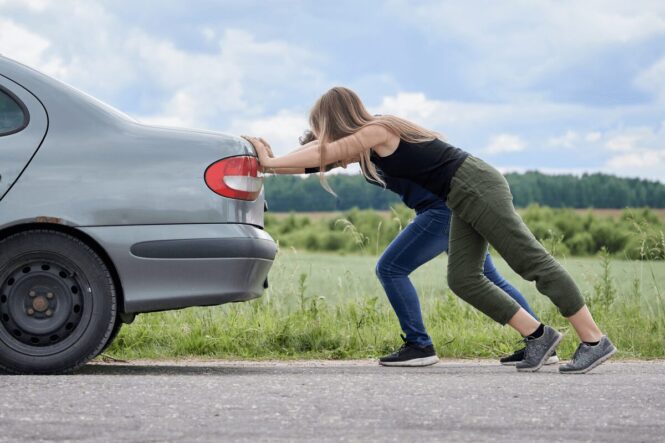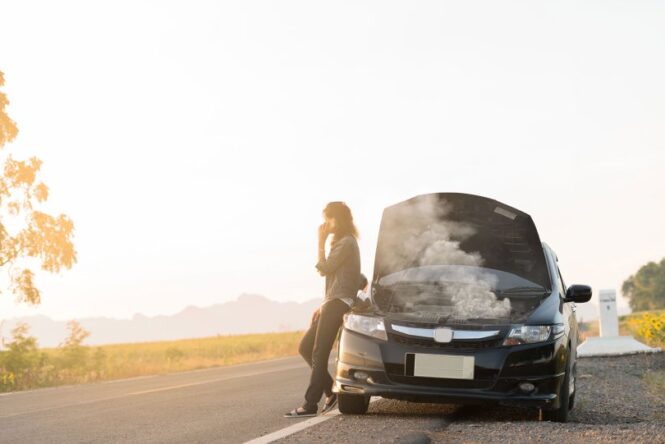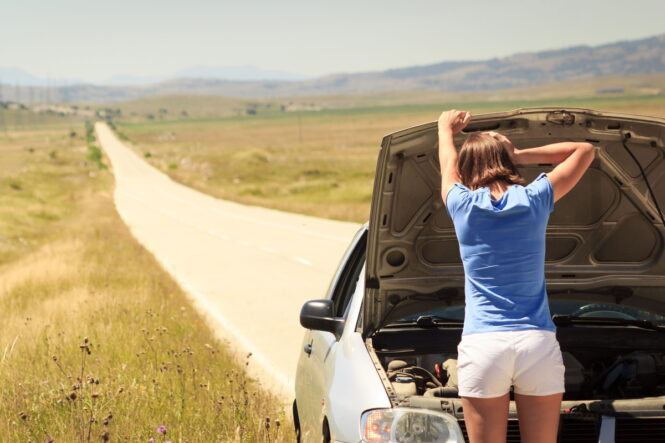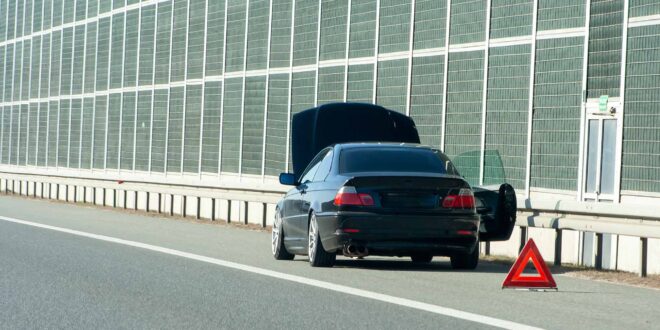Breaking down on the highway can be a nerve-wracking experience. You helplessly wait for help, road-raging cars whizzing past you, and an ever-growing fear of being stranded for days if nobody stops to help. But don’t worry – with some preparation and knowledge, you’ll be able to handle the situation efficiently and stay safe. Follow our 8-step guide to find out how to handle your car breakdown on a highway to minimize waiting time and maximize safety.
1. Contact a Tow Truck Service
As soon as you realize your vehicle has broken down, the first step is to contact a reliable tow truck service. Use your smartphone to search for nearby towing services, prioritizing those with high ratings and positive customer reviews. Choose a service specializing in roadside assistance to ensure they are equipped to deal with various emergencies.
Most tow truck services will be able to provide you with an estimated arrival time, so make sure to ask them this when you call. The Ipswich towing service can help you in Ipswich and the surrounding areas. Once you have selected a service, please provide them with your exact location, details about your vehicle, and the nature of the breakdown.
2. Move Your Vehicle to a Safe Place

Direct your vehicle safely off the main roadway if you can operate it. Maneuver your car to the hard shoulder of the highway or any available emergency lane. It is crucial to get as far away from the fast-moving traffic as possible to prevent unnecessary accidents or obstructions. Remember to signal your intentions to move to other road users, avoiding abrupt and unpredictable movements that could pose a safety risk.
Once the car is parked safely, ensure it is visible to other road users. Activate your vehicle’s hazard lights and, if you have them, place warning triangles or flares behind your vehicle to alert other drivers. It’s important to avoid attempting to repair your vehicle on a busy roadside or highway, as this may put you and other road users at risk.
3. Activate Your Hazard Warning Lights
Once you realize your car has broken down, turn on your hazard warning lights immediately. This will alert drivers behind you of the potential danger and reduce the chance of a rear-end collision. Activating your hazard warning lights at night or in bad weather conditions is especially important to increase visibility.
Remember, your hazard warning lights should be used only in emergencies. If you are waiting for roadside assistance or tow service on the highway, keep these lights on until help arrives.
4. Stay Calm

It is normal to feel stressed or overwhelmed in an emergency situation. But it’s critical to stay calm and composed while you wait for help to arrive. Whenever possible, remain inside your vehicle with the doors locked. Do not attempt any repairs or try to move your car if you don’t know what you’re doing; this can lead to further damage and put yourself and other drivers at risk.
If you need to leave your car:
- Get out on the opposite side of the road from where the traffic is moving so you are out of harm’s way.
- In case you have children with you, keep them inside the vehicle and ensure they remain calm, too.
- Maintain a low profile while waiting for help to arrive; avoid standing on the road, and don’t make any signals to pass traffic.
5. Ensure That You Have All the Necessary Documents & Information
When dealing with a vehicle breakdown, readily available documents can expedite the process of receiving assistance and getting back on the road. Always carry your driver’s license, vehicle registration, and insurance information. The tow truck service will require these documents, any responding law enforcement, and possibly your insurance company to process potential claims.
You should also have the contact information for your auto insurance company and roadside assistance program, if applicable. Having all this information organized in one place, such as a dedicated envelope or folder in your glove compartment, can save you significant time and stress during an already challenging situation.
6. Be Aware of Your Surroundings

When your vehicle has broken down, it’s important to maintain awareness of your surroundings. Stay alert for any suspicious activity and take note of the locations of other vehicles or people nearby. If you ever doubt a situation, trust your instinct and exercise caution.
If another driver stops to offer help, remain in your car and ask them to contact a tow truck service on your behalf. Do not hand over any personal documents or accept cash payments, as this may be an attempt at fraud. If you feel unsafe, call the police immediately and wait inside your vehicle with the doors locked until they arrive.
7. Have Emergency Supplies Ready
In case of a vehicle breakdown, carrying some emergency supplies with you in your car is wise. Your items should include such essentials as a fully charged phone and charger or power bank, first aid kit, spare tire, flashlight, jumper cables, safety triangle reflectors, basic tools like a wrench and screwdriver set, water and snacks, a blanket or extra clothing, and a road map.
Having these supplies handy can help you in an emergency and provide peace of mind if you ever find yourself stranded on the side of the road. It’s especially important to keep your car stocked with emergency items during winter when temperatures will drop quickly.
8. Take Necessary Precautions to Protect Yourself
When dealing with a vehicle breakdown, taking the necessary precautions to protect yourself and your car is important. Refrain from using aggressive words or gestures when talking to other motorists or responding law enforcement officers; instead, remain calm and polite in all your interactions.
If possible, avoid getting out of the car in isolated locations; if you must leave the vehicle, always have someone with you. Also, keep your belongings secure and out of sight in your car’s glove compartment or trunk.
Nobody likes dealing with a vehicle breakdown, but following the above steps can help minimize potential problems and keep you safe. Always stay calm and composed in such situations, and never attempt any repairs if you don’t know what you’re doing.
Be sure to carry all necessary documents when driving, and ensure your roadside emergency kit is always stocked up with essential supplies. Above all, trust your intuition and exercise caution when faced with an unexpected situation on the highway.
If you ever find yourself stranded with a car and no money, don’t worry. Our article will guide you through the situation and help you navigate it stress-free.
 Imagup General Magazine 2024
Imagup General Magazine 2024



